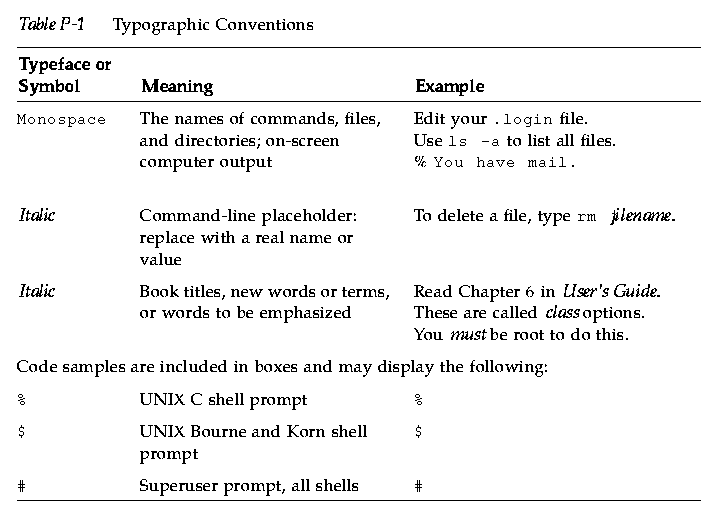




Chapter 2, "Managing Projects and Modules," explains how to create, open, save, and close projects and modules, and how to hide and show modules.
Chapter 3, "Laying Out a User Interface," explains how to drag and drop objects from the object palettes, how to edit interface objects, and how to align and distribute control objects in the interface.
Chapter 4, "Editing Properties of Interface Objects," explains how to edit object properties in the Revolving Property Editor.
Chapter 5, "Creating and Editing Panes, Menus, and Messages," explains how to create and edit pane objects, menus, and message dialog boxes.
Chapter 6, "Adding Functionality to the Interface," explains how to create on-item help, how to create functional connections between objects, and how to establish drag and drop and application framework behavior.
Chapter 7, "Grouping and Attaching Objects," explains how to group control objects and how to attach objects to each other for dynamic resize behavior.
Chapter 8, "Testing Menus, Help, and Connections," explains how to change to test mode for testing certain App Builder functions.
Chapter 9, "Generating Code and Building an Application," describes the Code Generator and explains how to generate code, make your application, and run it.
Appendix A, "App Builder Windows and Dialog Boxes," describes the primary window, including its object palettes, and other App Builder windows, including the Project Organizer, the Module Browser, and the Code Generator.
Appendix B, "Revolving Property Editor," describes the Revolving Property Editor in general and each of the individual property editors specifically.





